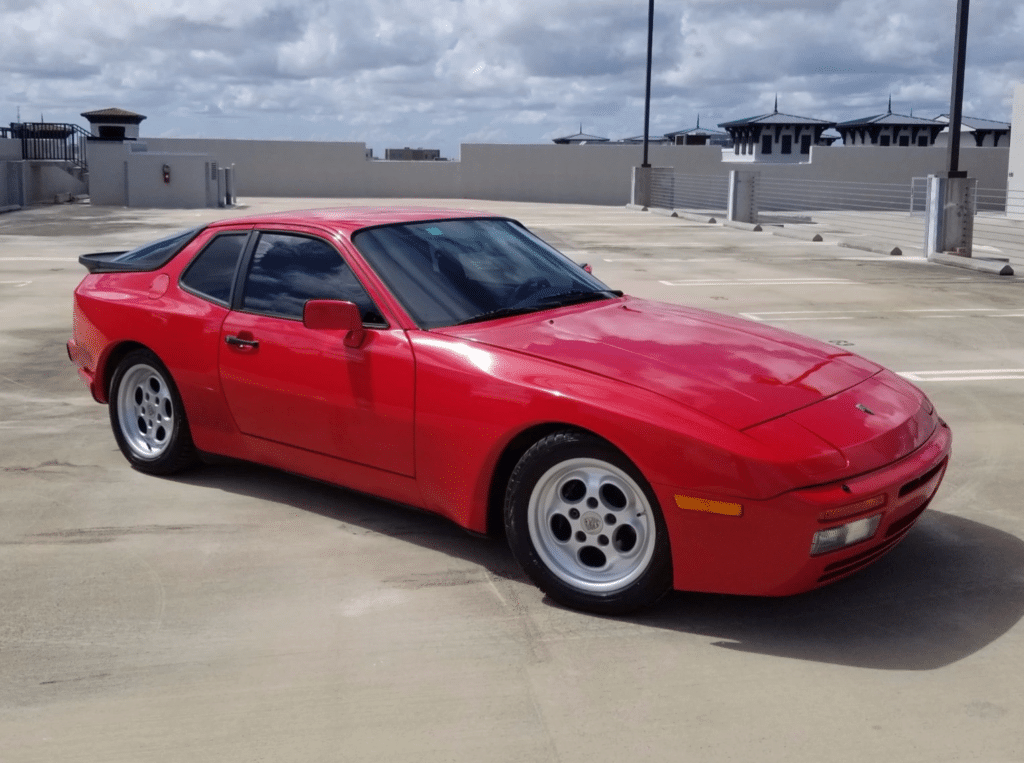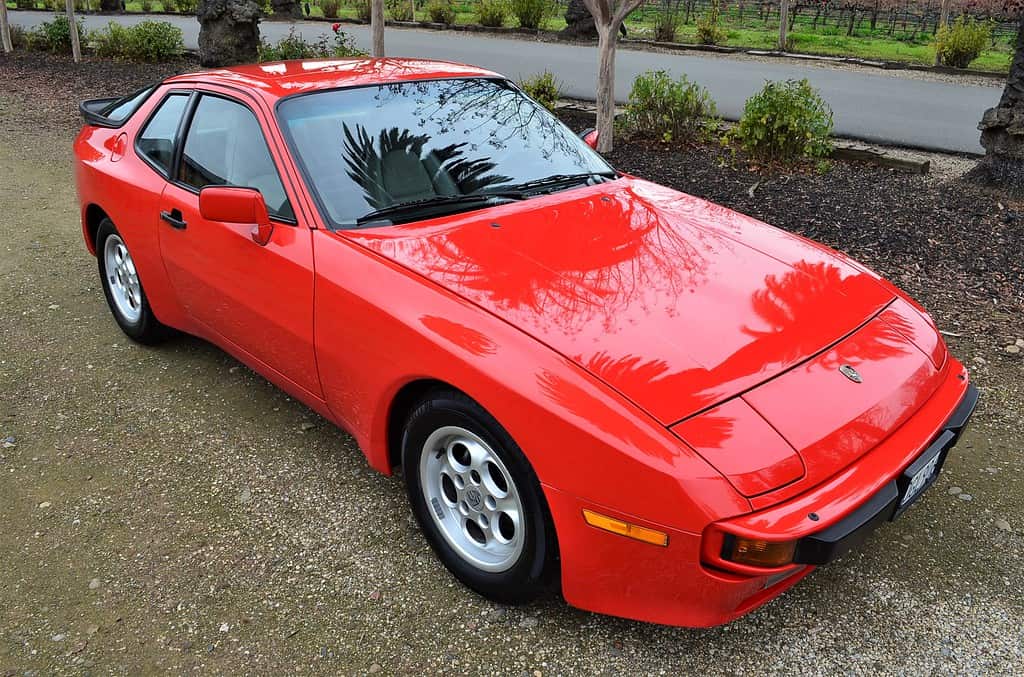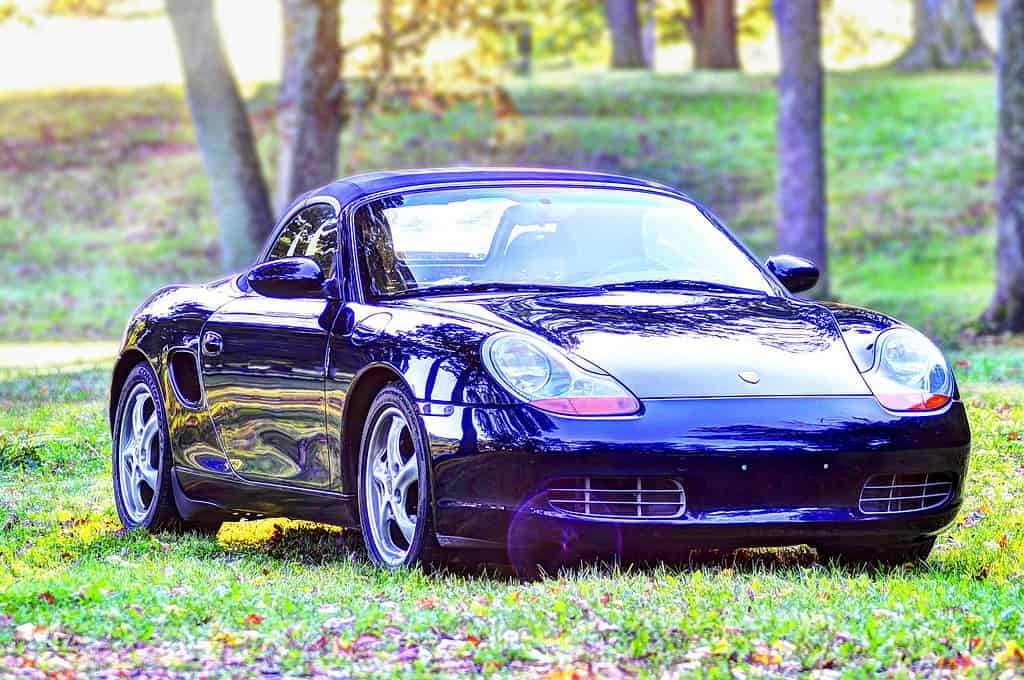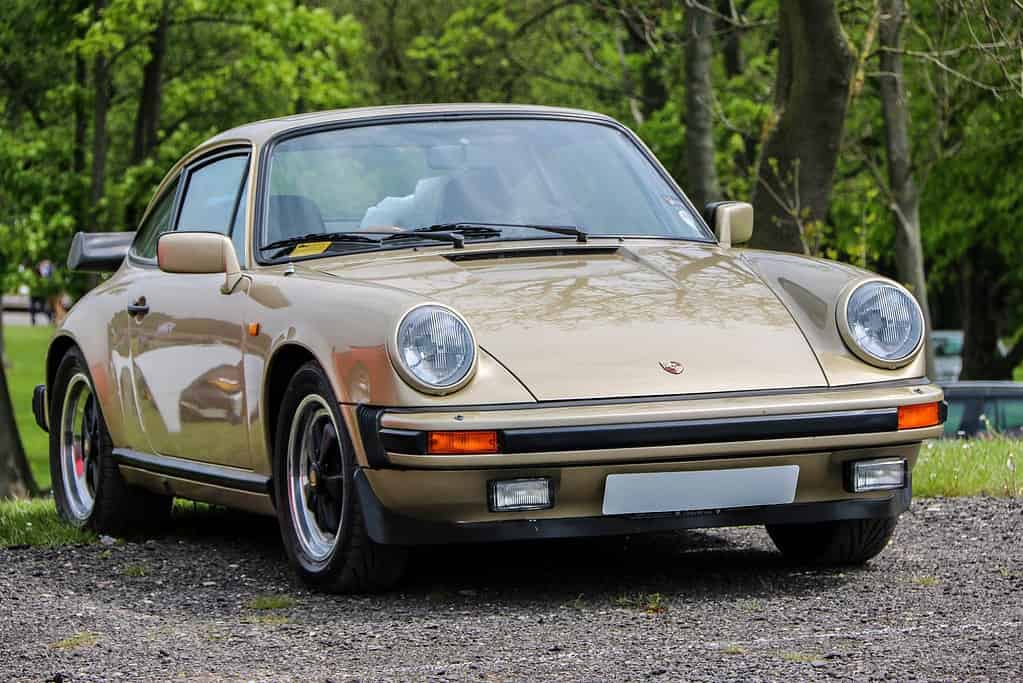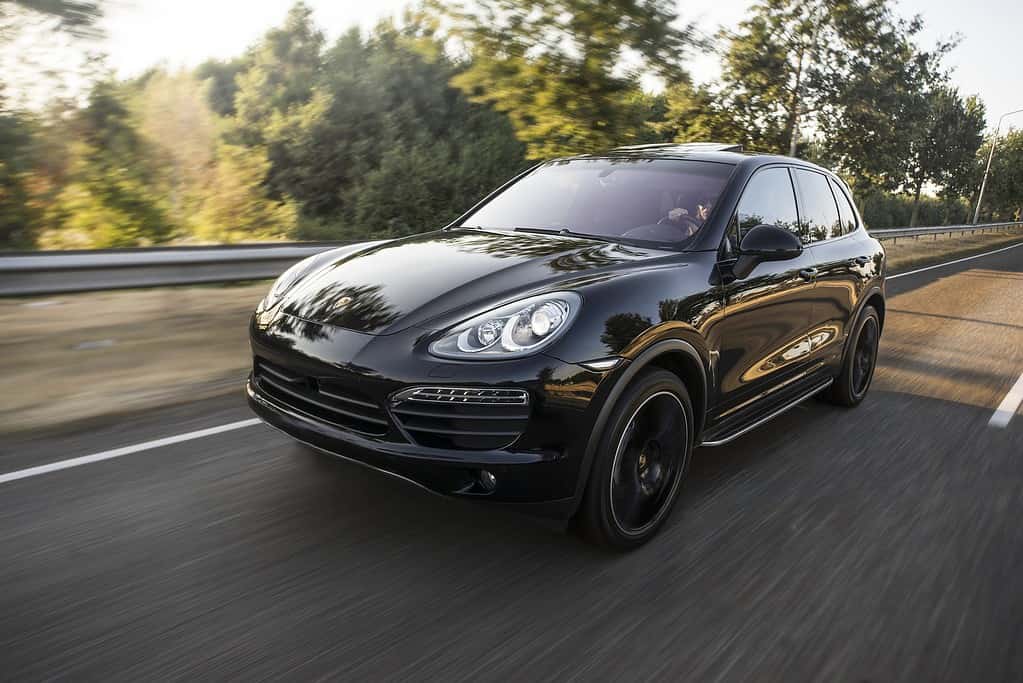In the early 1980s, Porsche introduced the 944 as its new flagship car. The 944 was a much-needed success for Porsche, which was struggling financially at the time. Thanks to its great looks and sports car performance, the 944 quickly became one of the most popular cars on the market.
Although it’s been out of production for nearly 20 years now, the 944 remains an iconic sports car that is still loved by enthusiasts today. Here’s everything you need to know about the different Porsche 944 models.
Porsche 944 History
Produced by German automobile manufacturer Porsche, the 944 was created to fill the gap between the 924 and the 928 in Porsche’s lineup. It was originally designed to be powered by a four-cylinder engine, but a V8 engine was later added to the lineup. The 944 was well-received by the automotive press and became one of Porsche’s best-selling models.
It was the first Porsche to be equipped with ABS (Anti-lock Braking System), and it featured a new front-engine, rear-wheel drive layout. Its driver and passenger airbags made the 944 one of the safest cars on the road, and its 2+2 hatchback design made it a practical everyday car. It had a 2.5-liter engine that produced 163 hp and was capable of reaching a top speed of 161 mph. The 944’s body was styled by Anatole Lapine, and it was available in both coupe and convertible forms. The 944 quickly became one of Porsche’s most successful models, with over 163,000 units sold between 1983 and 1991. The base coupe was the top seller with 113,070 cars sold, followed by the Turbo with just over 25,000 units sold.
Throughout its production life, the 944 underwent several changes from one model year to the next. These changes included different engine options, interior and exterior styling updates, and new safety and technology features. Ultimately, production of the 944 ended in 1991, but it left a lasting impression on the automotive world. The 944 is widely considered to be one of the most iconic Porsche models ever produced.
The Different Models of Porsche 944
When the Porsche 944 was first introduced, it was available in different models, and each model had its own unique features and specifications that set it apart from the others.
Porsche Callaway 944
Porsche and Callaway have been working together for years to create some of the most impressive cars on the market. One result of their collaboration was the Porsche Callaway 944, a car that combined Porsche’s iconic design with Callaway’s world-class engineering. The 944 features a modified engine that produces an incredible amount of power, making it one of the fastest cars on the road. In addition, the car has been outfitted with a number of other Callaway-designed components, including an upgraded suspension and brakes.
Although there were only 20 Callaway 944s ever produced, each one is a true work of art. Today, these cars are worth a fortune and are highly sought-after by collectors.
Porsche 944 Turbo
In 1985, Porsche introduced the Turbo model of the 944. Its major difference from the 944 version was that the Turbo had a turbocharged and intercooled edition of the standard 944’s engine, which increased its power and performance. The Turbo also featured an enhanced front apron, which helped to improve aerodynamics and give the car a more aggressive look. It was also the world’s first production car to include driver and passenger-side airbags as standard equipment. These changes helped to set it apart from the standard 944 and made it one of the most popular models in the Porsche lineup.
Only 25,245 Porsche 944 Turbos were ever made, with 13,982 of them shipped to the United States. The rest were sold in Australia and Canada.
Porsche 944 Turbo S
The Turbo S essentially had a larger turbo, larger brakes, a stronger gearbox, and improved suspension. From 1989 onwards, however, the “S” was dropped from the name and all of its improved features were implemented into future 944s as standard.
Porsche 944 S
The Porsche 944 S was introduced in 1987 as an upgrade to the base model 944. The biggest change was the addition of a 16-valve DOHC (Dual-Overhead-Cam) engine, which increased power from 147 hp to 187 hp. Other changes included larger brakes, revised suspension, bigger wheels and tires, magnesium valve cover and intake passages, revised exhaust system, and a larger intercooler.
Another impressive update was the new engine, which was significantly more powerful than the previous version. The 944 S could accelerate from 0 to 62 mph in just 6.5 seconds, making it one of the fastest cars in its class. In addition, the top speed was increased to 144 mph, and fuel performance was improved thanks to revised transmission and gearing. Its power-to-weight ratio was also better than the previous model, making it a great choice for anyone looking for a powerful sports car. Finally, the suspension was upgraded with progressive springs, which helped to improve handling on both curvy roads and the track.
The Porsche 944 S was raced in the IMSA Firehawk Cup Series and in countries like Canada and Europe. Although the production of the 944 S ended a year after it was introduced, it remains one of the most popular Porsche 944 models to date. It was then superseded by the S2 model.
Porsche 944 S2
The Porsche 944 S2 was introduced in 1989 and was the company’s top-of-the-line model at the time. It featured a 3.0L inline-four engine with 211 hp and brought the 0-60 mph time down to 6.2 seconds. One of the main reasons for the introduction of the S2 was to help address complaints about the 944’s lack of power. It has the same DOHC and valve setup as the 944 S but with a larger bore and stroke. The 944 S2 also has a higher compression ratio and revised camshafts. These changes give the 944 S2 more horsepower and torque than the 944 S, and its 5-speed manual transmission helps it get the power to the ground.
Inside the 944 S2 cabins were new premium leather seats for added comfort, and the insert on the dashboard was finished for a more luxurious look. It was an intricately-designed version of the original 944 that featured a long and low hood at the front, with flared fenders and muscular body lines down the side. The six-slot taillights and the subtle body-colored diffuser added a touch of class and the lack-out rear wing at the rear completed the look. The overall design of the car was intended to exude an aura of sophistication and luxury.
There were a total of 14,000 S2 units produced, and approximately only 3,650 of those made their way to the United States. Even though it was the top-of-the-line model, the 944 S2 still suffered from the same reliability issues as the other models. As a result, it has become a bit of a forgotten gem in the Porsche lineup. However, for those who are lucky enough to own one, the 944 S2 is a true classic that is sure to turn heads.
Porsche 944 S2 Cabriolet
A cabriolet is a roadster with a soft top that can be folded down with a manual or automatic operation. The Porsche 944 S2 Cabriolet was introduced at the Frankfurt Auto show in 1985 and was a big hit with the public. The car was based on the Porsche 944 S and featured a number of improvements, including a revised suspension, a larger engine, and a redesigned interior. The car was available in both left- and right-hand drive versions and was equipped with a manual or automatic transmission. The notable difference between the S2 Cabriolet and the 944 S2 models was the inclusion rear lid that is made of sheet steel and the addition of a manually operated soft top. This makes the car more expensive and rare.
Each Porsche 944 S2 Cabriolet has a unique Vehicle Identification Number (VIN). This 17-digit code can be used to track the car’s history, such as ownership changes and accident reports. The VIN can also be used to check for recalls and factory defects. For the 944 S2 Cabriolet, its VIN first started with WPOB with “B” signifying the body type of Targa. It was later changed to WPOC with “C” meaning cabriolet or convertible.
There are only a limited number of these vehicles that were ever produced, making them highly sought after by collectors and Porsche enthusiasts. Many of these were used as road tests and performance vehicles by the German automaker.
The 944 S2 Cabriolet was introduced at the 1985 Frankfurt Auto Show as a new model. Although it was discontinued in 1991, the 944 S2 Cabriolet was one of Porsche’s most successful models, with a total of 3,254 produced in the world market and 2,402 sold in the US.
Porsche 944 Turbo Cabriolet
The Porsche 944 Turbo Cabriolet was introduced in 1991 as a way to add excitement to the 944 lineup. The Turbo Cabriolet featured a powerful turbocharged engine and a sleek convertible top. Although it was significantly more expensive than the standard 944, the Turbo Cabriolet offered unmatched performance and style. It was available with either a manual or automatic transmission, and it featured a number of high-tech features, such as traction control and ABS brakes.
The rarity of the 944 Turbo Cabriolet makes it one of the most sought-after Porsches on the market. With only 625 ever produced, the Turbo Cabriolet is one of the rarest Porsches ever made. It was sold in limited markets, such as Japan, the UK, Australia, and South Africa. Notably, the Turbo Cabriolet had a top speed of 162 mph and could accelerate from 0 to 60 mph in 5.8 seconds. Unfortunately, production of the Turbo Cabriolet was discontinued soon after it was introduced, making it one of the shortest-lived Porsche models ever.
Porsche 944 Pricing and Availability
With different models, years, and trims, the Porsche 944 has a lot of options for pricing. It’s a delightful car that offers luxurious features at an attractive price point. Originally released in 1982, the 944 was available in both standard and turbocharged versions. Prices for the standard model started at $36,990, while the Turbo S model had a sticker price of $43,350. In today’s dollars, that would be the equivalent of $92,457 and $108,354, respectively. However, its prices vary depending on how many options and features are included, but, overall, the 944 is worth the investment.
The Porsche 944 was introduced as a response to criticisms that the company’s cars were too expensive and exclusive. The 944 was intended to be a more affordable option that would still offer the same high level of performance and luxury that Porsche is known for. Unfortunately, the production of the 944 was discontinued in 1991, making it one of the shortest-lived models in Porsche’s history. However, this also makes the 944 a highly sought-after collectible car. In recent years, prices for 944s have been on the rise as more and more enthusiasts have begun to appreciate the unique combination of style, performance, and value that the model offers. Due to its popularity, the 944 has made a comeback in recent years, with several companies remanufacturing the car. As a result, the 944 is never an obsolete vehicle because there’s always someone willing to upgrade or remodel it.
Is the Porsche 944 Worth the Investment?
Investing in a Porsche 944 is a great decision for anyone looking for a luxurious and high-performance vehicle. The 944 offers all of the features that Porsche is known for with a more attractive price tag. While it may be difficult to find a 944 for sale, the effort is worth it for anyone interested in owning a piece of automotive history. Here are some good reasons that a 944 is never a waste of money:
- German-engineered marvel: The 944 was designed by Porsche, one of the most iconic and well-respected automakers in the world that’s known for its precision engineering. When a car has such a legendary pedigree, it’s bound to be a good investment.
- Luxurious features: The 944 comes packed with features that would be considered luxury items on other cars. It has a well-balanced chassis, making it a joy to drive. The engine is also incredibly powerful yet still manages to get good gas mileage. In short, the 944 is a well-rounded car that performs admirably in all areas.
- Timeless: It looks just as good today as it did when it was first released. That means that it will never go out of style, making it a wise investment for anyone interested in classic cars.
- Limited production: Only a handful of 944s were ever produced, meaning that they are quite rare. This makes them all the more valuable, as collectors are always on the lookout for rare and unique cars.
- Collectible: The 944 is already considered a classic car by many enthusiasts. As time goes on, its value is only going to increase. So, if you’re looking for an investment that will appreciate over time, the 944 is a great option.
Final Thoughts
Porsche is known for its luxurious and high-performance sports cars. Their cars ooze with power, style, and sophistication that is unmatched by many. The 944 model is one of their classic cars that was produced and became an instant hit among car enthusiasts. It was produced from 1983 to 1991, and during that time, different models were released to the public.
Overall, Porsche cars continue to be one of the best and most popular sports cars in the world. The 944 has become the base of many of the company’s future designs. Its weaknesses have been improved upon, and its strengths have been retained with every new model that comes out. This means that the Porsche 944 will continue to be a favorite among car lovers for many years to come. Thanks to its history, design, and performance, the 944 will always have a special place in the hearts of car enthusiasts.
Now that you know more about the Porsche 944, the next time you see one on the road, you can appreciate it even more. Who knows, maybe someday you’ll be lucky enough to own one yourself! Thank you for reading.

